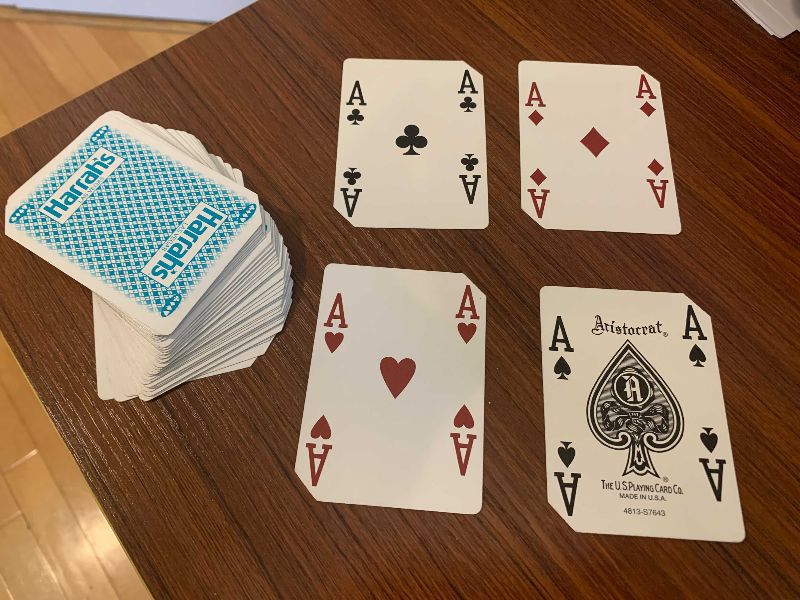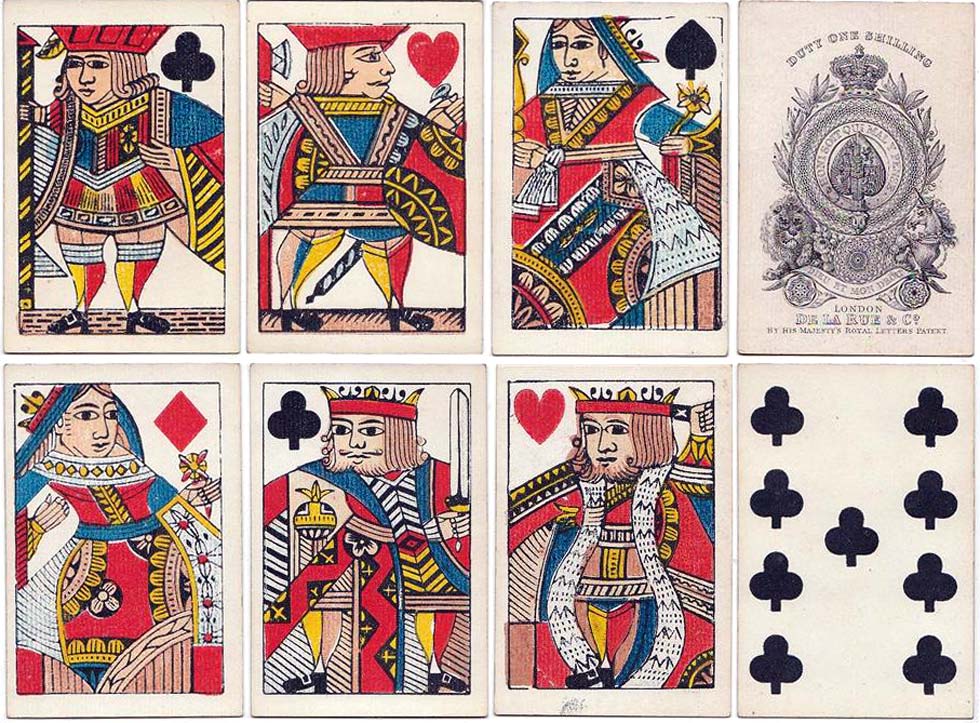Why the Ace of Spades is So Darn Big

Pictured above is a deck of playing cards, purportedly from Harrah’s in Las Vegas, that happen to be on my desk. All four aces are face-up so you could see that the ace of spades is a little bit different than the others. The center image — called a “pip” — is uniform across the aces of clubs, diamonds, and hearts. But the one on the ace of spades is, to use the technical term, ginormous. And if you check a deck of cards in your possession, you’ll likely see the same thing (but only if you’re in a part of the world that was once part of the British Empire).
Usually, these things don’t happen by accident. And this is no exception. There’s a very good reason that the ace of spades is bigger and more ornate:
Taxes.
Decks of playing cards have been around since the 1300s and have provided a great pastime for us all since. As innovations in printing emerged, the ability to mass-produce decks of cards increased and they quickly became a commodity throughout Great Britain. The popularity of card games became an opportunity for the British crown — a revenue opportunity, that is. Documents and other paper items were taxed via the sale of stamped paper. The government sold pieces of paper with pre-printed revenue stamps on them and mandated that this paper be used for taxed products; in the case of playing cards, in the late 1500s, card manufacturers bought the paper, used it to wrap their decks of cards, and then sold the deck to their customers (passing down some of the tax’s cost in the process).
The tax came and went over the next century or so, becoming effectively permanent in 1711. (Queen Anne needed to pay the bills to fight the War of Spanish Succession while also continuing England’s expansion into the Western Hemisphere, and everything and anything became subject to taxation.) At first, the government used the same system, but quickly, a problem arose. People would buy a deck of cards and dispose of the overwrap, thereby erasing any proof that they had paid the tax. The solution was to add a hand stamp to the top card in the deck, which was traditionally the ace of spades. This stamp didn’t require additional payment, though; it simply acted like a receipt. And that, in turn, caused a new problem — you could, at least in theory, get a stamped ace without having purchased the taxed paper wrapper. Card manufacturers started to avoid the tax.
In 1765, the government came up with a draconian solution: instead of selling stamped paper, the government would make aces of spades. Oh, and they made it illegal for anyone else to. As the International Playing-Card Society explains, the “maker was not allowed to make his own ace of spades—to forge an ace was a capital offense.”Those aces couldn’t just be plain cards with a single pip in the middle; they needed to communicate that the tax was paid. So, as seen below (via here), the ace of spades ended up with an ornate picture in the center and enough language to explain why.

In 1862, the ban on creating your own aces of spades was lifted, but by then, the tradition of the large ace was cemented in the gamers’ experiences. Card manufacturers saw an opportunity to use this real estate to help their branding efforts; as seen in the picture up top, the ace of spades now typically tells players who made the deck and its place of manufacture.
As for the tax itself, it lasted another century; in 1960, Parliament finally got rid of it, finding that collecting a tax on a deck of cards was more work than it was worth.
Bonus fact: Yes it really was a capital offense — as in, punishable by death — for someone in England to make an ace of spaces without permission. And in one case, this was actually enforced. In 1805, England hanged a man named Richard Harding for forging an ace of spades and selling it as authentic.
From the Archives: How Poker (and Boredom) Can Help Stop Murders: Requires prisoners, too.
